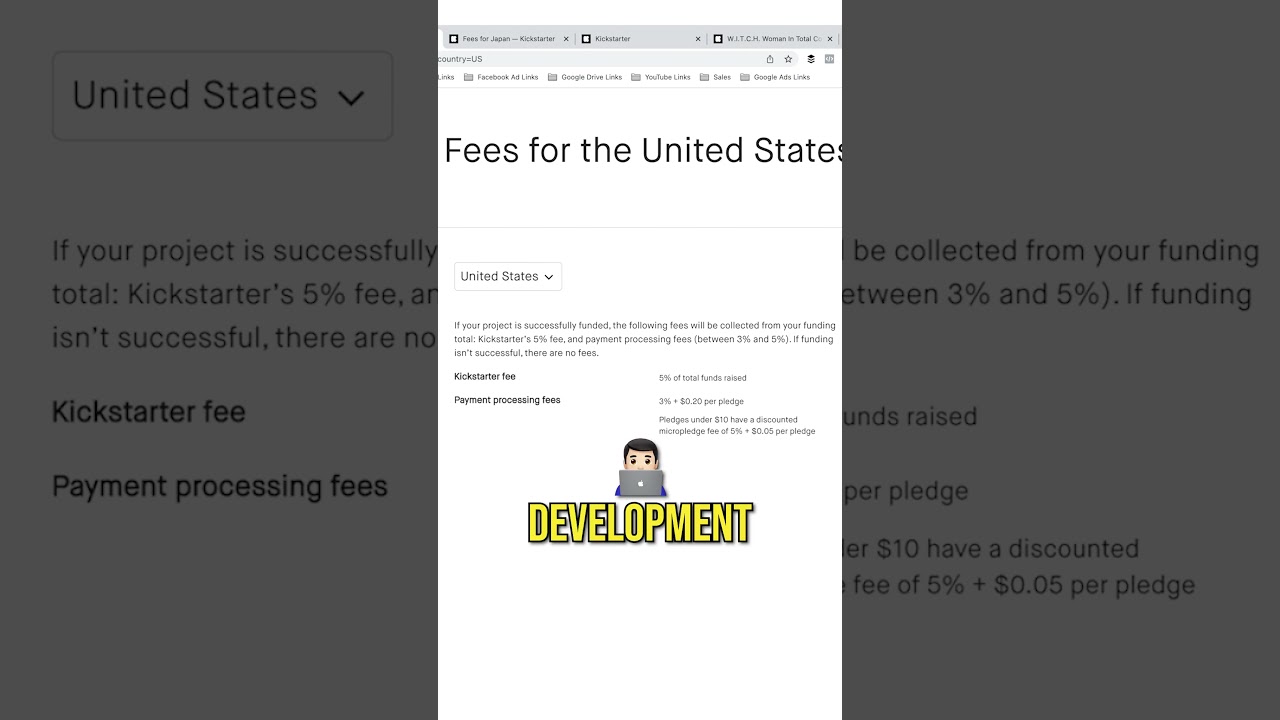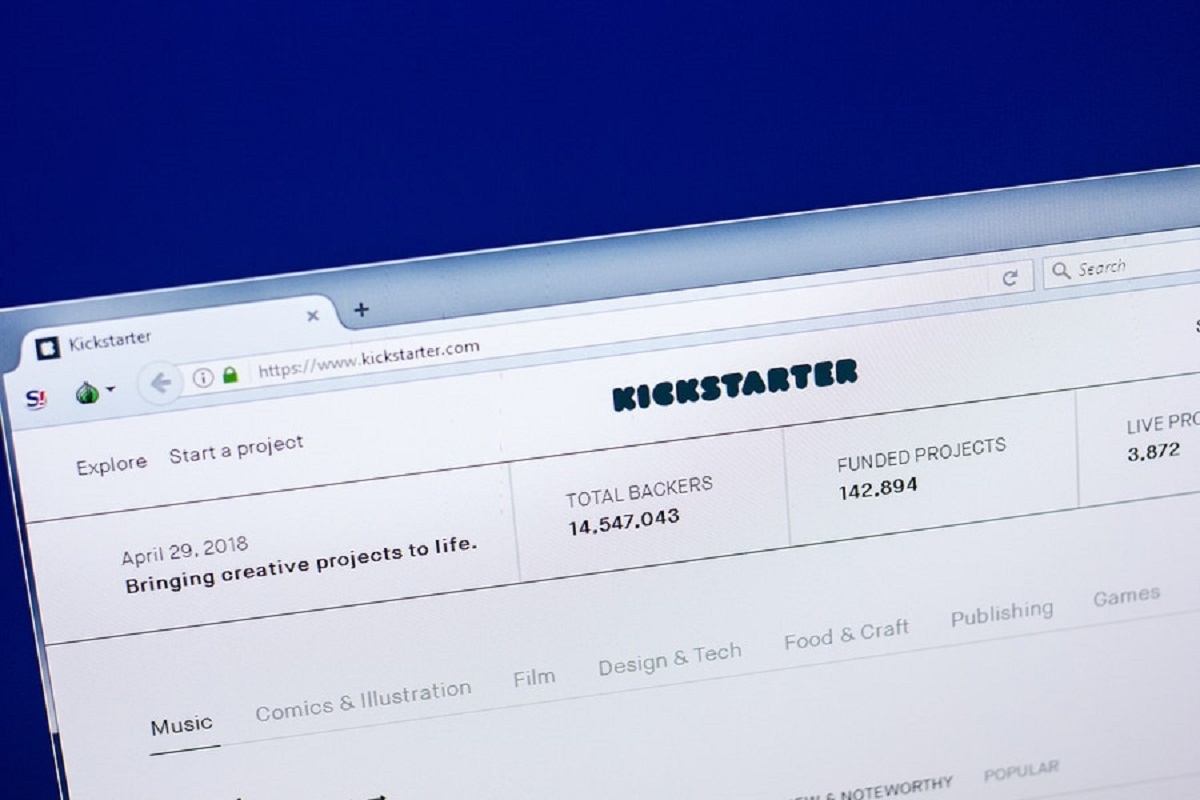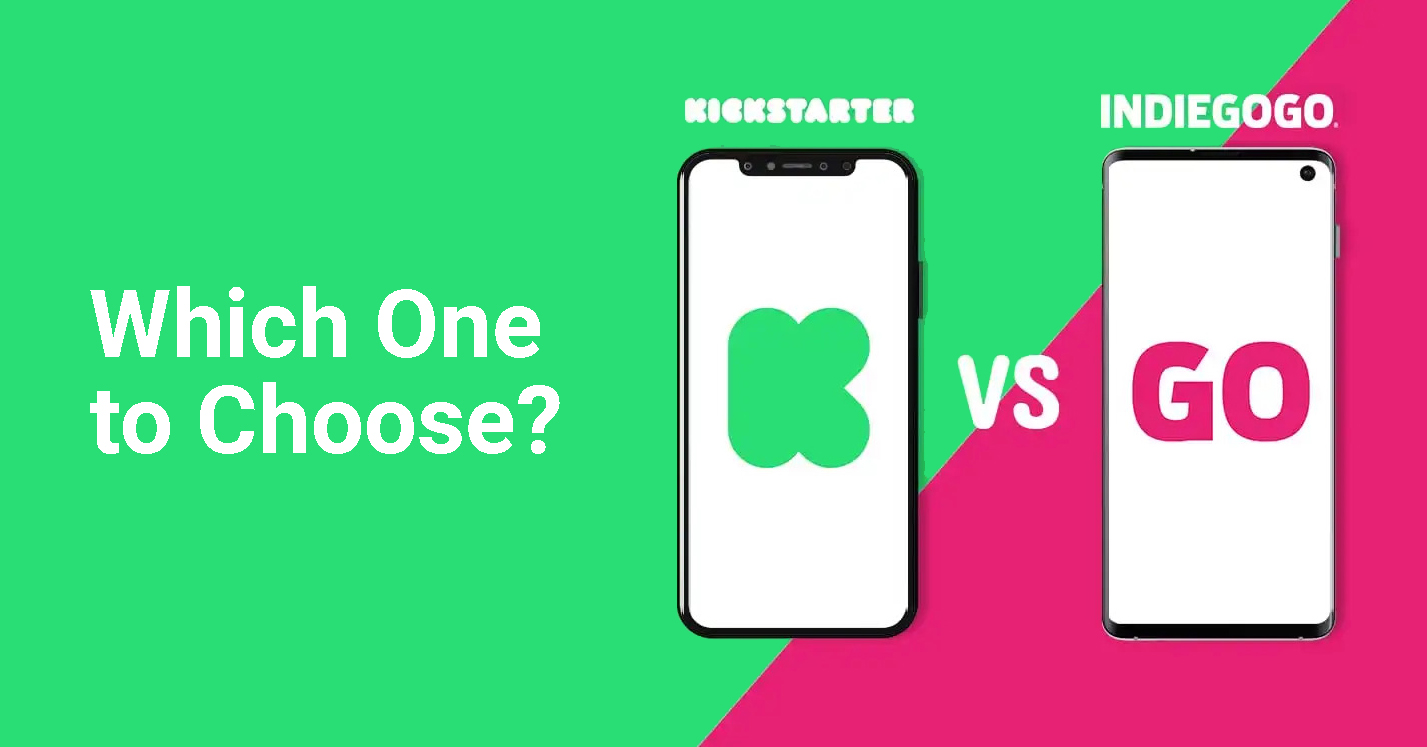Introduction
Welcome to the exciting world of Kickstarter, a popular crowdfunding platform that allows individuals and businesses to bring their innovative ideas to life. Kickstarter has revolutionized the way projects get funded by connecting creators with backers from all over the world. However, before jumping into the crowdfunding journey, it is important to understand the various fees that may be charged to the borrower.
Launching a campaign on Kickstarter entails more than just showcasing your project and seeking financial support. It is essential to be aware of the potential costs that can impact your budget and overall funding goals. This article will provide you with a comprehensive overview of the different fees associated with running a Kickstarter campaign, helping you navigate the financial aspects successfully.
Each Kickstarter project is unique, and the specific fees you encounter may vary based on the nature of your project, the funding goal, and other factors. However, there are several common types of fees that borrowers typically encounter. Understanding these fees will enable you to plan and budget effectively, ensuring that your campaign is financially sustainable from start to finish.
In the following sections, we will explore the various types of fees you may encounter while using Kickstarter. From platform fees to payment processing costs, we will delve into each aspect in detail. Additionally, we will provide tips for managing these fees to optimize your project’s financial success.
Understanding Kickstarter
Kickstarter is an online crowdfunding platform that enables individuals and businesses to raise funds for creative projects. It serves as a bridge between innovators and potential supporters, allowing them to bring their ideas to life. Whether you have a groundbreaking technology concept, a film project, or a creative art installation, Kickstarter provides a platform for you to showcase your work and seek financial backing.
When launching a campaign on Kickstarter, you set a funding goal and a deadline. Supporters, known as backers, pledge money towards your project. However, it’s important to note that Kickstarter operates on an “all-or-nothing” principle. This means that if you don’t reach your funding goal within the specified timeframe, you won’t receive any funds, and backers won’t be charged.
One of the key advantages of Kickstarter is its global reach. Your project can attract backers from all around the world, giving you access to a diverse pool of supporters. Kickstarter also helps create a sense of community, as backers become emotionally invested in the success of your project. They are not merely customers but passionate advocates who believe in your vision and want to see it come to fruition.
To ensure transparency and build trust, Kickstarter has established a set of guidelines for project creators to follow. These guidelines outline the types of projects that are eligible for funding and provide creators with best practices for presenting their campaigns. As a borrower, it is crucial to familiarize yourself with these guidelines and adhere to them throughout your campaign.
Now that we have a basic understanding of Kickstarter and how it works, let’s explore the different types of fees that borrowers may encounter during their crowdfunding journey.
Types of Fees
When launching a crowdfunding campaign on Kickstarter, borrowers should be aware of the potential fees they may encounter throughout the process. These fees can impact the overall budget and the amount of funds that can be allocated towards the actual project. Here are the main types of fees to consider:
- Platform Fee: Kickstarter charges a 5% platform fee on the total funds raised if the project is successfully funded. This fee goes towards the operational expenses of running the platform and supporting future projects. It is important to factor this fee into your funding goal to ensure that you have enough funds to cover it.
- Payment Processing Fee: In addition to the platform fee, there is also a payment processing fee charged by the payment provider used by Kickstarter. This fee is typically around 3-5% of the funds raised, plus a fixed fee per transaction. The specific fees may vary depending on the region and the payment service provider chosen.
- Currency Conversion Fee: If you are running an international campaign and receive pledges in different currencies, Kickstarter may charge a currency conversion fee when converting the funds into your desired currency. This fee is typically charged by the payment provider at their prevailing exchange rate and can add to the overall costs of your campaign.
- Shipping and Delivery Costs: If your project involves physical rewards or products that need to be shipped to backers, you need to account for shipping and delivery costs. These expenses can vary based on the size, weight, and destination of the items. It is important to calculate and include these costs in your budget to avoid any surprises.
- Tax Obligations: Depending on the jurisdiction and the nature of your project, you may have tax obligations to fulfill. It is important to consult with a tax professional to understand the tax implications of your crowdfunding campaign and the potential taxes you may need to pay on the funds raised.
- Administration Fees: Throughout your campaign, you may encounter additional administration fees, such as fees for refunding pledges or making changes to reward tiers. These fees are usually charged by the payment provider and should be taken into account when planning your campaign budget.
- Additional Costs: Depending on the unique aspects of your project, there may be additional costs that arise. This could include expenses for prototype development, marketing materials, advertising, or hiring external help. Being prepared for potential additional costs can help you manage your budget effectively.
Understanding these various fees will allow you to plan and budget your Kickstarter campaign effectively. In the following sections, we will offer tips on managing these fees to optimize your project’s financial success.
Platform Fee
One of the primary fees associated with running a Kickstarter campaign is the platform fee. Kickstarter charges a 5% fee on the total funds raised if the project successfully meets its funding goal. This fee helps cover the operational expenses of the platform and supports future projects.
It’s important to factor in this fee when setting your funding goal to ensure that you have enough funds to cover both your project expenses and the platform fee. For example, if your project has a funding goal of $10,000, you should account for an additional $500 (5% of the goal) to cover the platform fee.
Keep in mind that if your campaign doesn’t meet its funding goal, Kickstarter won’t charge the platform fee, and no funds will be collected from your backers. However, if your project is successfully funded, Kickstarter will deduct the platform fee from the funds raised before transferring the remaining amount to you.
When calculating your budget, consider the platform fee as an essential part of your overall expenses. It is crucial to ensure that the remaining funds after deducting the fee are sufficient to cover the production costs, rewards fulfillment, and any other project-related expenses.
Additionally, Kickstarter provides a valuable platform for showcasing your project and connecting with potential backers. The platform fee supports ongoing improvements and ensures that creators like you have access to the tools and resources needed to run successful campaigns.
While the platform fee is a necessary aspect of using Kickstarter, it is essential to carefully plan and manage your financials to ensure that your campaign remains financially viable and sustainable. By understanding and accounting for the platform fee from the outset, you can set realistic funding goals and make informed decisions throughout your crowdfunding journey.
Payment Processing Fee
In addition to the platform fee, Kickstarter also charges a payment processing fee. This fee is associated with the payment service provider used by Kickstarter to process the financial transactions of your campaign.
The payment processing fee typically ranges from 3-5% of the total funds raised, along with a fixed fee per transaction. The specific fees may vary depending on the region and the payment service provider chosen by Kickstarter.
It’s important to factor in the payment processing fee when setting your funding goal and budget. For example, if you raise $10,000 through your campaign, you can expect to pay around $300-$500 (3-5% of the funds raised) in payment processing fees, in addition to the fixed fee per transaction.
As an entrepreneur or project creator, it’s crucial to keep track of the payment processing fees, as they directly impact the amount of funds you receive from your backers. It’s essential to consider these fees when planning your budget, ensuring that your funding goal takes into account the platform fee, payment processing fee, and any other anticipated expenses.
While the payment processing fee is an additional cost, it provides a secure and reliable payment system for both you and your backers. Payment service providers work diligently to ensure a smooth transaction process, protecting against fraud and providing the necessary infrastructure for safe fund transfers.
Knowing the payment processing fee in advance allows you to make informed decisions about your crowdfunding campaign. By understanding and factoring in these fees, you can set appropriate funding goals, select the most suitable payment service provider, and manage your budget efficiently.
Currency Conversion Fee
If you are running an international Kickstarter campaign and receive pledges in different currencies, you may encounter a currency conversion fee. This fee is associated with converting the funds received in different currencies into your desired currency.
The currency conversion fee is typically charged by the payment service provider at their prevailing exchange rate. The rate used for currency conversion may include a small fee or markup added by the provider. It’s important to note that Kickstarter does not control or dictate the currency conversion fees, as they are determined by the payment service provider.
When planning your international campaign, it’s crucial to consider the potential currency conversion fees to ensure that you accurately estimate the funds you will receive. Keep in mind that fluctuations in exchange rates can also impact the amount you receive after conversion.
To mitigate currency conversion fees, consider utilizing payment service providers that offer competitive exchange rates and lower conversion fees. Researching and comparing different providers can help you find the most cost-effective option for your campaign.
When communicating with your international backers, be transparent about potential currency conversion fees they may incur. Inform them that their pledge amount may be subject to minor variations due to the currency exchange process. Maintaining clear and open communication can help manage expectations and build trust with your backers.
It’s also important to factor in currency conversion fees when setting your funding goal and budget. Ensure that the funds you receive, after accounting for fees and currency conversion, are sufficient to cover your project expenses and any other associated costs.
Being aware of currency conversion fees and taking them into account in your campaign planning will help you manage your international crowdfunding efforts more effectively. By understanding and factoring these fees into your overall budget, you can minimize financial surprises and ensure the sustainability of your international Kickstarter campaign.
Shipping and Delivery Costs
If your Kickstarter project involves physical rewards or products that need to be shipped to your backers, it’s important to factor in shipping and delivery costs. These costs can vary based on factors such as the size and weight of the items, the destination of the shipments, and the shipping method chosen.
Shipping and delivery costs can potentially have a significant impact on your budget, especially if you have a large number of backers or international shipments. It’s crucial to carefully calculate and include these costs when planning your crowdfunding campaign.
There are several ways to manage shipping and delivery costs effectively. Here are a few strategies to consider:
- Research Shipping Options: Research different shipping providers and compare their prices and services. Look for providers that offer competitive rates, reliability, and options for tracking shipments.
- Consider Fulfillment Services: If managing the shipping process yourself seems overwhelming, consider using fulfillment services. These services can handle all aspects of shipping, including packaging, labeling, and delivery. While they come at a cost, they can save you time and ensure a smooth shipping process.
- Be Transparent About Shipping Costs: Clearly communicate to your backers the shipping costs associated with their chosen rewards. Transparency helps manage expectations and avoids any surprises when backers are asked to cover shipping fees separately.
- Offer Shipping Estimates: Provide estimated shipping dates to your backers during the campaign and after the project is funded. This helps manage expectations and reduces inquiries about the status of shipments.
- Take Advantage of Bulk Shipping: If possible, negotiate discounted rates with shipping providers by leveraging the volume of shipments you will be sending. This can help lower overall shipping costs.
- Consider Fulfillment Centers: For international campaigns, using local fulfillment centers in different regions or countries can help reduce shipping costs and delivery times. These centers can store your inventory and handle local shipping, reducing the need for long-distance international shipments.
By carefully considering shipping and delivery costs and implementing the strategies mentioned above, you can effectively manage this aspect of your Kickstarter campaign. Proper planning and budgeting will ensure that the shipping process runs smoothly and that backers receive their rewards in a timely manner.
Tax Obligations
When running a Kickstarter campaign, it’s important to understand the potential tax obligations you may have. The tax implications of crowdfunding can vary depending on the jurisdiction and the nature of your project.
While I am an AI language model and not a tax professional, it is recommended to consult with a tax professional or advisor who can provide specific guidance based on your circumstances and location. Here are a few general points to consider:
Income Tax: The funds raised through your Kickstarter campaign may be considered taxable income. It is essential to consult with a tax professional to determine whether the funds you raise are subject to income tax in your jurisdiction.
Sales Tax: If you are offering physical products or rewards that are subject to sales tax in your jurisdiction, you may be responsible for charging and remitting the applicable sales taxes to the respective tax authorities. Understanding the sales tax regulations in your jurisdiction and seeking guidance from a tax professional is essential to ensure compliance.
International Tax Considerations: If you have international backers or your campaign reaches an international audience, you may have additional tax considerations. Different countries have varying tax regulations, and it is important to understand the tax implications of receiving funds from international backers. Working with a tax professional who specializes in international tax matters can provide valuable guidance in navigating these complexities.
Tax Deductibility for Backers: In some cases, backers may be eligible for tax deductions or credits when supporting certain types of projects. It’s important to inform your backers that they should consult with a tax professional regarding any potential tax benefits they may receive as a result of their pledge.
Each tax situation is unique, and it is crucial to consult with a tax professional to ensure compliance with local tax laws and regulations. They can assess your specific circumstances, assist with proper record-keeping, and provide guidance on fulfilling your tax obligations.
By being aware of potential tax obligations from the outset and seeking professional advice, you can ensure that you comply with the tax regulations in your jurisdiction and avoid any unnecessary complications.
Administration Fees
Throughout your Kickstarter campaign, you may encounter additional administration fees that can impact your budget. These fees are typically associated with various administrative tasks and services related to managing your campaign.
Some common administration fees you may encounter include:
- Refund Fees: If you need to refund a backer’s pledge for any reason, you may be charged a refund fee by the payment service provider. The fee is usually a percentage of the refunded amount or a fixed fee per refunded transaction.
- Rewards Revision Fees: If you need to make changes to your reward tiers after your campaign has started, you may be charged a revision fee by Kickstarter. The fee helps cover the administrative costs associated with making these adjustments.
- Campaign Editing Fees: In some cases, if you need to make significant changes to your campaign page content or layout after your campaign has launched, Kickstarter may charge an editing fee for the modifications. This fee helps cover the administrative resources needed to process these changes.
- External Service Fees: If you choose to use external services or tools to enhance your Kickstarter campaign, there may be additional fees associated with those services. Examples include hiring a professional videographer, graphic designer, or marketing consultant to optimize your campaign materials.
- Bank Transfer Fees: When transferring funds from your Kickstarter account to your bank account, you may encounter bank transfer fees. These fees are typically charged by the banks involved in the transaction and vary depending on your location and the transfer method selected.
It’s important to factor in these administration fees when planning your campaign budget. Consider the potential costs associated with refunds, reward revisions, campaign edits, and any external services you plan to use. By accounting for these fees, you can ensure that you have adequate funds to cover these administrative expenses.
While administration fees can add to the overall cost of running a Kickstarter campaign, they are necessary for ensuring the smooth operation and management of your project. It’s important to review the fees associated with these administrative tasks and services beforehand to avoid any surprises or budgetary setbacks.
By being aware of potential administration fees and factoring them into your budget, you can effectively manage these costs and maintain financial transparency throughout your Kickstarter campaign.
Additional Costs
In addition to the fees mentioned earlier, there may be other additional costs that arise during your Kickstarter campaign. These costs can vary depending on the unique aspects of your project and the specific requirements to bring it to life.
Here are some examples of potential additional costs to consider:
- Prototype Development: If your project involves creating prototypes or samples to showcase your idea, there may be costs associated with prototyping materials, manufacturing, and design iterations.
- Marketing and Advertising: Promoting your Kickstarter campaign requires strategic marketing and advertising efforts. These can involve expenses for creating promotional materials, running targeted ads, hiring influencers, or partnering with media outlets to increase your campaign’s visibility and reach.
- Professional Services: Depending on the complexity of your project, you may need to engage professional services such as lawyers, accountants, designers, consultants, or experts to assist with specific aspects of your campaign or project.
- Equipment and Tools: Certain projects may require specialized equipment, software, or tools to bring them to life. These costs should be accounted for if they are essential for the successful execution of your project.
- Localization Expenses: If you plan to deliver your project globally, you may incur localization expenses. This includes translating your campaign content, packaging, and user manuals into different languages to effectively communicate with a diverse audience.
- Contingency Funds: It’s always wise to have a contingency fund to account for unexpected expenses or unforeseen challenges that may arise during your campaign. This can provide a buffer to handle last-minute changes, production delays, or any other unforeseen circumstances.
Being aware of potential additional costs and factoring them into your budget is crucial for a successful Kickstarter campaign. Carefully analyze the specific needs and requirements of your project and consider any potential expenses that may arise.
When planning your crowdfunding campaign, take the time to research and estimate the costs associated with these additional considerations. By including them in your budget, you can ensure that you have adequate funds to cover all necessary expenses and deliver on your promises to your backers.
Remember, thorough planning and budgeting are key to a successful Kickstarter campaign. By understanding and accounting for these additional costs, you can set realistic funding goals and manage your project effectively from start to finish.
Tips for Managing Fees
Managing the fees associated with running a Kickstarter campaign is essential to ensure that your project remains financially viable. Here are some tips and strategies to help you effectively manage the fees involved:
- Thoroughly Calculate Costs: Before launching your campaign, carefully calculate all the fees you may encounter, including the platform fee, payment processing fee, shipping costs, and any other relevant expenses. This will help you set a realistic funding goal and avoid surprises during the campaign.
- Include Fees in Funding Goal: When setting your funding goal, make sure to account for all fees and expenses. This will ensure that you have enough funds to cover the costs of your project and still meet your financial goals after deducting the fees.
- Research Payment Service Providers: Compare different payment service providers to find the one that offers competitive rates and fits your needs. Lower payment processing fees can help maximize the funds you receive from your backers.
- Budget for Shipping: Shipping costs can add up, especially for international shipments. Research shipping options, estimate costs accurately, and consider offering different shipping tiers to backers based on their location to manage shipping expenses effectively.
- Be Transparent About Costs: Clearly communicate any fees or additional costs to your backers upfront. Transparency will help manage expectations and avoid any misunderstandings or surprises once the campaign ends.
- Plan for Stretch Goals: If you have stretch goals in your campaign, consider the potential impact on fees and expenses. Stretch goals may require additional production costs, shipping expenses, or administrative fees. Ensure that your stretch goals are financially feasible and align with your budget.
- Monitor Your Campaign: Keep a close eye on your campaign’s progress and expenses throughout the process. Regularly analyze the funds raised, fees deducted, and remaining budget. This will help you make informed decisions and adjust your strategy if needed.
- Review and Adapt: Continuously review your budget, assess the fees incurred, and adapt your plans and strategies accordingly. Regularly evaluate your funding goal, expenditures, and campaign timeline to ensure that you stay on track and fulfill your financial obligations.
By implementing these tips, you can effectively manage the fees associated with your Kickstarter campaign. Proper planning, budgeting, and transparency will create a strong foundation for a successful crowdfunding experience that maximizes your project’s financial sustainability.
Conclusion
Running a Kickstarter campaign can be an exhilarating and rewarding experience, but it’s crucial to understand the various fees involved to ensure financial success. By carefully managing these fees, you can set realistic funding goals, budget effectively, and deliver on your promises to your backers.
Throughout this article, we explored different types of fees typically associated with Kickstarter campaigns. These fees include the platform fee, payment processing fee, currency conversion fee, shipping and delivery costs, tax obligations, administration fees, and potential additional costs.
To manage these fees effectively, we provided several tips and strategies. Thoroughly calculating costs, including fees in your funding goal, researching payment service providers, budgeting for shipping, being transparent about costs, planning for stretch goals, monitoring your campaign, and periodically reviewing and adapting your budget are essential steps to take.
Remember, planning and budgeting are key to a successful Kickstarter campaign. By understanding the fees involved, accurately estimating expenses, and making informed decisions, you can optimize your project’s financial viability and ensure a positive experience for both you and your backers.
Keep in mind that every Kickstarter project is unique, and the specific fees you encounter may vary based on your project’s nature and requirements. It’s crucial to remain flexible and adapt your plans as necessary to navigate any unforeseen circumstances that may arise.
Kickstarter is a remarkable platform that empowers creators to bring their creative ideas to life, and by managing fees effectively, you can maximize your chances of success. So, plan diligently, be transparent, and take advantage of the resources available to you to make your Kickstarter campaign a resounding triumph.

























